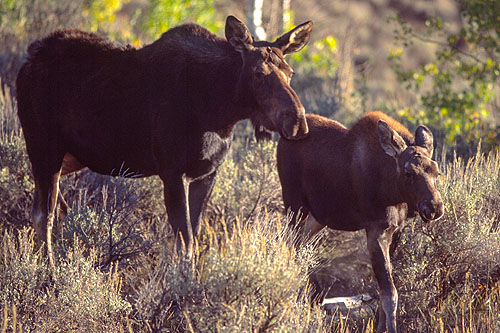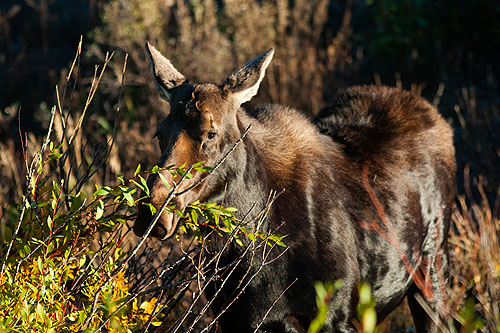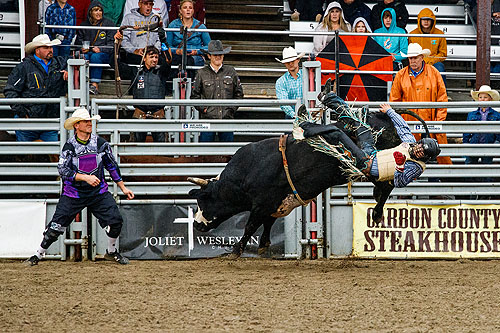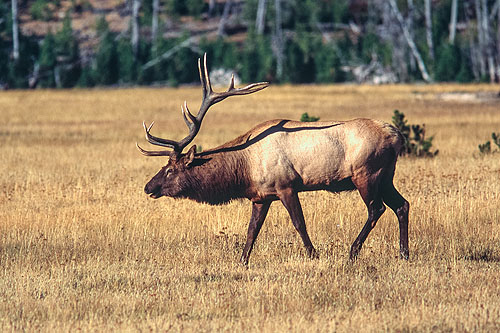Blog Posts
By Year
20242023
2022
2021
2020
2019
2018
2017
2016
2015
2014
2013
2012
2011
2010
2009
2008
2007
2006
2005
2004
2003
2002
2001
2000
1999
1998
| ISO | [Next Page - Free Ride] |
| July 28, 2023 [Photos] | |
Gather around kiddies as I tell you about the old days before digital photography. Actually not "before," but the era when digital was just starting to go mainstream and film still had ardent defenders. Just 20 years ago, the death of film did not seem inevitable. I was going through old prints and film yesterday looking for something for a family event and came across my 2003 Yellowstone/Grand Teton slides. I still have my ancient Minolta film scanner, and a much better scanning program than I had back then, Vuescan, so I took a few minutes to reprocess some slides. Even the modern software couldn't save my Grand Teton moose slides and I (re)discovered why. For slides, I shot mostly Provia, ISO 100, which is too slow for wildlife photography unless the subject is well lit and slow moving. Another limitation of slide film is the exposure has to be very precise. With digital RAW images and even color negative film, the "Shadows" slider in Photoshop can reveal detail in dark areas. With a scanned slide, if the side of the moose looks like a black blob, Photoshop will not reveal anything else. In ancient times, professional slide shooters bracketed their image exposure hoping to get one that was properly exposed, which worked well for landscapes but not moving subjects. All of my moose slides are motion blurred and/or underexposed. A properly exposed slide is a beautiful thing. An underexposed slide is a nightmare. This one is the best of the bunch. The calf is almost in focus and there is some detail on its side, but the side of the mom is the aforementioned black blob.  Slide, 2003 Around the turn of the century, I used to carry two film cameras, one with slide film ISO 50 or 100 and one with faster print film ISO between 200 and 800. By 2003, that had evolved into carrying a film (slide) SLR and a DSLR. I got a few shots of a Grand Teton moose with my 1D DSLR at ISO 200. Not perfect, but it has better dynamic range than the slide. No black blob.  Digital, ISO 200, 2003 But going even further back when I was doing sports for the newspaper in the early 1980s, for night games we would use ISO 400 B&W film but shoot at a higher ISO of 800-1,600. Then we would push (overprocess) the film by leaving it in the chemicals for an extra few minutes. The result was extremely grainy but good enough for the newspaper. Now something similar but better can be accomplished with the twist of a dial. Film grain can be artistic, but digital noise is not the same as film grain, and I don't want to deal with it. Add the fact that we didn't have autofocus and it is amazing we ever got any usable sports photos. This image is from the 1981 South Dakota High School AAA championship game between Sturgis and Brookings. To be critical, it looks like the focus point is a foot or two in front of the players.  In 2004 I upgraded from the 1D (4 megapixels) to the 1D Mark II (8 mp), and I sold off the Canon film cameras. Film was dead to me. Lately I've been carrying two SLRs again, the 5D and 6D, but that's just so I don't have to change lenses as often. The 6D supposedly can shoot at ISO 102,400, but I have determined that 6,400 is about as high as I want to go. This image was 1/1600th of a second at ISO 6,400 with the 6D. Back in 1983 or even 2003, we could only dream of getting such an image in low light.  Digital, ISO 6,400, 2023 The original 1D had a max ISO of 3,200 and had a weird banding pattern of noise. I can see the banding in the dark areas of my old images when I attempt to lighten them. The Mark II, which I still own and use, has the same max of 3,200 but handles the noise better. For my application of shooting birds in the daytime with a motion sensor, I stay in the 200-400 range. I did get some decent slides of an elk in Yellowstone back in 2003, well lit and slow moving. But the digital image at ISO 200 is much cleaner.  Slide, probably ISO 100 Provia, 2003  Digital, ISO 200, 2003 Finally, another handy little thing about digital is I know my precise camera settings from 20 years ago. With film, not so much. I know the digital image of the elk was shot at 7:18 pm on September 18, 2003 with an exposure of 1/1000 second, f/5.6 (aperture priority), ISO 200. With the slide, I know it was processed in September 2003 and if I can find the little tail of film in the box, I might be able to tell it was Provia 100. I know that no one is fighting the film vs. digital war any more. Film is not practical for most applications and anyone who does use it probably calls themself an artist. But it's useful to jot these things down so we remember how we got here. | |
Top Menu | Destinations | Years | Species | Aircraft, etc. | Blog | Contact Info
All photos ©1998-2024 by Thomas O'Neil